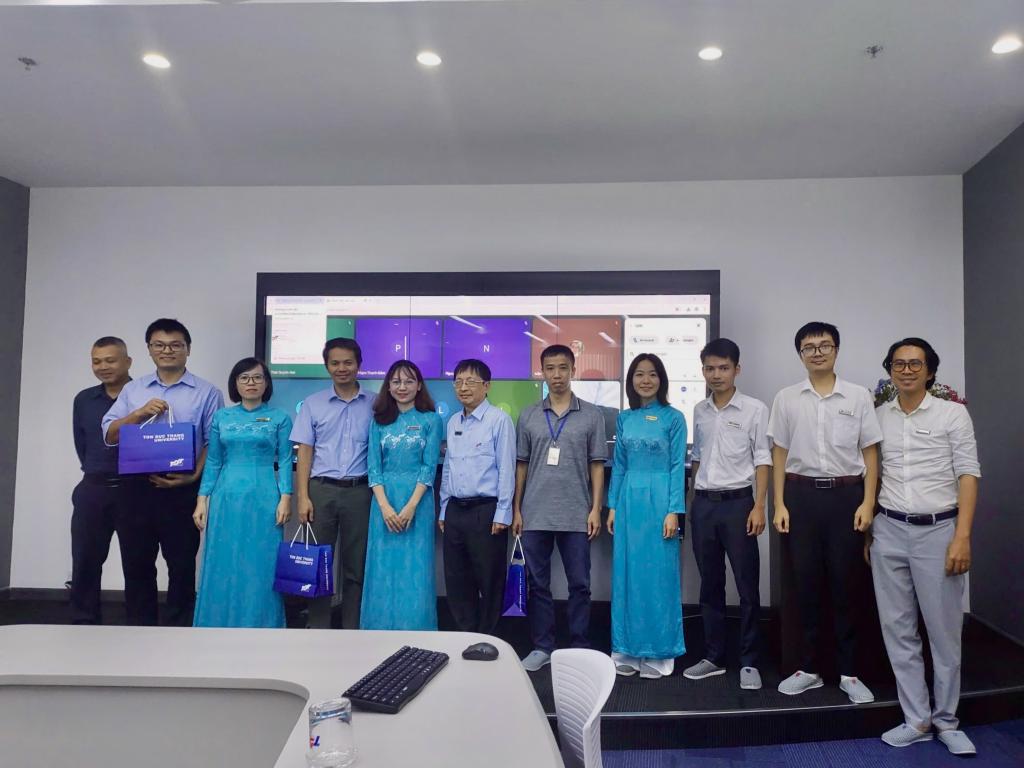Seminar on the topic: Modeling and Optimization of Mechanical Systems and Composite Materials
At 9:00 a.m. on October 20, 2025, IAST organized an seminar at the Meeting Room on the 5th Floor of the Library (Tan Hung Campus) and the Office of the IAST in Hanoi - Ton Duc Thang University with the following details:
1/ Assoc. Prof. Dr. La Duc Viet reported on the topic: Some theoretical and experimental issues related to semi-active control in mechanical systems.
Abstract:
A mechanical system is determined by main factors such as mass, stiffness, damping and external forces. If we optimize the internal quantities of the system (mass, stiffness, damping), we have the concept of passive control. If we can apply external forces to the system in an optimal way, we have the concept of active control. In many passive and active control problems, it is generally reasonable to consider them as linear systems, and many optimization methods in linear systems can be applied. A type of control that lies between passive and active is semi-active, where we can control the internal factors of the system over time. This system is a nonlinear system, or in the simplest case can be reduced to a multi-linear system. The report introduces some ways that semi-active control systems can be realized. The report presents some optimal semi-active control problems in freely oscillating or randomly oscillating mechanical systems. For one-degree-of-freedom systems oscillating due to initial conditions on displacement, we have found truly optimal solutions in the class of all semi-active damping control functions. For one- and two-degree-of-freedom systems oscillating randomly, we present formulas to reduce bilinear systems to equivalent linearized systems, thereby obtaining optimal solutions. The report also presents initial experiments on semi-active control systems including: magnetorheological fluids, magnetorheological rubber and electromagnetic shock absorbers.
2/ Assoc. Prof. Dr. Nguyen Trung Kien reported on the topic: Scaling law for macroscopic conductivity of composite materials containing imperfectly bonded inclusions
Abstract:
A general imperfect interface model for conductivity problem is presented. This model includes the highly and lowly conducted ones as the particular cases. In contrast to the ideal interface, the effective conductivity of composite site containing imperfectly bonded inclusions depends on the size of the particles. This size dependence can be described by simple scaling laws de- pending on the kind of the interface and surface parameters. These scaling laws help to check the suitability of data measurement or numerical com- putation for effective conductivity of composite materials having imperfect interface over a wide size range.
3/ Dr. Le Tien Thinh reported on the topic: Random field modeling of elasticity tensor for the interphase between matrix and reinforcement in nanocomposite materials
Abstract:
For nano-reinforced heterogeneous materials, both experiments and numerical simulations demonstrate the existence of a perturbed area at the boundary between the inclusion and the matrix phase. This area is modeled as an interphase whose elastic properties fluctuated from point to point, as revealed by Molecular Dynamics simulation. In this study, we therefore address (i) the stochastic modeling of the interphase and (ii) the study of the relationship between the random interphase model and a deterministic interface model. The purpose of this work is twofold. First of all, we are interested in constructing a probabilistic model for the matrix-valued random field, modeling the elastic properties of the interphase. Then, this model is used to perform a parametric study for the apparent tensor associated with the microstructure. Simulations are specifically used to characterize the influence of both the random interphase and interface models on the material’s overall properties. Finally, the associated elastic surface properties are computed by solving an optimization problem involving the effective properties of the random medium.

- Log in to post comments
